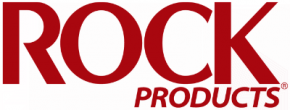MSHA’s “Safety Program for Surface Mobile Equipment” Rule Should Be Viewed As A Tool To Help Mining Companies Protect Their Workers And Manage Accidents.
By Joseph P. McGuire
Labeled a “Christmas Surprise,” the MSHA “Safety Program for Surface Mobile Equipment” rule was signed into law on Dec. 20, 2023. It became effective on Jan. 19, 2024, and requires mine operators and Part 45 Contractors to have a written program to address surface powered haulage hazards in place by July 17, 2024.
The rule, like many others is seen by some as “overkill” and just another example of government intrusion. On the other hand, maybe it should be viewed as a tool to help mining companies protect their workers and manage the accidents where a majority of fatalities occur … Powered Haulage and Machinery.
The final rule stated, “in 2023, machinery (mobile) accidents have still accounted for a significant number of mining fatalities.” MSHA fatality data for 2023 indicate there were 40 miner deaths of which 10 (25%) were Powered Haulage and 16 (40%) were Machinery. Combined, 65% of fatalities from 2023 were determined to be in these two categories. Since 2008, the number of fatalities in these categories has ranged from a low of 47% (2011 and 2012) to a high of 65% (2021 and 2023) with a 16-year average of 54%.
I doubt anyone would argue that any actions a company might take to reduce the number fatalities caused by powered haulage or machinery accidents would be wasted. As the number above show, the industry, for at least the past 16 years, has not done a very good job of reducing fatalities in these areas by “doing what they have been doing.”
This rule might be a way to change the trend. Companies can either spend time complaining about the rule and doing a minimum (by creating a program which is of no value to worker safety) or they can view this as a process to get their employees involved in developing a program which might get them engaged in day-to-day safety because they helped create it.
The rule is not complicated but does take time to understand what is needed for a program to meet MSHA expectations. If one spends time reading and re-reading the final rule, as published in the Federal Register, he/she will find that it is straight forward and explains what mining companies need to do to attain compliance. But like most governmental regulations, this rule has some gray areas and is vague enough to cause concern about compliance and how it will be interpreted by MSHA Inspectors.
Guidance
Guidance from MSHA, which has taken a little time to develop, is available on its webpage, from stakeholder meetings being held across the country and from MSHA district office staff. It has been this writer’s experience that they are willing to assist, one simply needs to ask questions about the rule and how to develop a Safety Program for Surface Mobile Equipment. This has been and will continue to be a learning process for MSHA, mining companies and the contractors who work on their sites.
Most MSHA district offices advise mining companies to follow the information on MSHA’s web-page and provided in the stakeholder meetings to help meet the requirements outlined in the Rule. These offices also suggest reviewing the templates found on its webpage and use them or develop a program modeled after them.
But in either case, the program must be tailored to each individual company’s circumstances meaning a company must elicit input from its workers on the powered haulage hazards they experience in their workplace and ways they believe these hazards could be eliminated or managed. There is no doubt MSHA is taking the Rule seriously and truly believe if companies do the same, powered haulage and machinery fatalities can be reduced.
The Other End
On the other end of the spectrum the guidance provided by some MSHA district offices is quite different from those described earlier in this document. It has been said attendees, at an industry association safety meeting where the Final Rule and developing a safety program were discussed, got a little different message.
What they thought they heard from MSHA staff was inspectors are going to being instructed to ask to see a company’s written Safety Program for Surface Mobile Equipment. If they have something or are developing one, they are to check the box. In addition, attendees were led to understand, when developing the program, they did not have to get input on identifying and mitigation of hazards from their workers.
If this is truly the case, programs in this area becomes just another paperwork drill and will be of no value to miner safety. Companies concerned about their workers’ safety will not follow this guidance but take this rule seriously and develop a program which gets input from the workers, meets requirements outlined in the Rule, and will be of benefit to them. Inconsistent information such as this confuses the regulated community.
MSHA district offices that are doing as much as possible to assist mining companies in understanding the rule and program requirements have delivered a consistent message and done their best to eliminate confusion.
The Final Rule published in the Federal Register, states that all companies must get input from workers “so that their written safety programs can be tailored to their unique mining operations and conditions” (Federal Register: Page 13, 12/20/2023). To assist mining companies understand the four “requirements” all written programs must address (Madisonville, Ky. Stakeholders’ Meeting/Presentation Slide #6: 3/19/2024) and to help them develop written safety programs, MSHA has four templates available on its home page (Go to Final Rule/Compliance Assistance: Templates and Other Resources). Using these program templates or modeling a program after them will probably result in one that is acceptable to MSHA inspectors.
- Number One: MSHA Fillable Template.
- Number Two and Three: NSSGA and Portland Cement Association provided Fillable Templates. These two programs are similar to one another.
- Number Four: The ABC Stone Company Program appears to have been developed prior to the Final Rule.
Other takeaways or messages from one of MSHA’s stakeholder meetings (As this writer understood them) include:
- Mining companies and contractors should not be lulled to sleep by thinking templates are an easy way to get by. It is not as simple as … fill in the blanks, say this is our plan, put it in the safety “binder” or file cabinet and move on. Merely doing this may not be acceptable in every MSHA district nor to their inspectors.
- Simply filling in blanks on a template is not the intent of the rule nor does it improve safety.
- Again, this is where the “tailored to their unique mining operations and conditions” kicks in (Federal Register: Page 13, 12/20/2023). As written in the Federal Register (Page 18) “The final rule makes explicit that miners provide input in developing and updating the written safety program.”
- The number of miners from which a company gets input must be “representative” of their workforce and not just a few of them. It might be prudent to ask your EFS person how “representative” is defined.
- The rule, as published in the Federal Register, does not require the “Responsible Person” to be identified by name (Federal Register: Pages 8-9, 12/20/23). Although MSHA staff indicated it is “preferable” to have a name, identifying the company president or his/her designee(s) as the “Responsible Person(s) will meet this requirement. (Comments made in Madisonville, Ky., Stakeholders’ Meeting: 3/39/2024).
- Independent contractors working on a mine site must have their own program or be incorporated into the operator’s program. It is the operator’s responsibility to ensure independent contractors are in compliance. (Madisonville, Ky., Stakeholders’ Meeting/Presentation Slide #4: (3/19/2024).
- This is not a safety “plan” for mobile equipment safety, but is a safety “program” for surface mobile equipment.
The messages from MSHA may vary, depending upon in which district a company has mining operations. There are probably some people on both sides of this issue. There are MSHA staff and mine operators who believe it to be a good rule, which if taken seriously, might even save the lives of those who work for them. Then there are some on the other side where both miners and regulators will go through the motions, check the boxes and go on as if nothing has changed. A program written in this manner will become just another piece of paper collecting dust … only to be taken out and dusted off when MSHA inspectors asks to see it.
It will be interesting to see what the research finds in a few years. If the number of fatalities remains constant or goes up, will research will probably find it to be the result of a poorly written Safety Program for Surface Mobile Equipment, a lack of enforcement or mining companies continuing to “do what they have always done?” If the numbers do not change for the better, with those who were opposed to the rule will sit back and say, “We told you so!”
On the other hand, if the number of fatalities go down, will the research show this rule, which requires miners to be involved, did in fact encourage more worker engagement and, as a result, helped them to mitigate the powered haulage and machinery hazards they encounter in the workplace? If this rule is followed and a good Safety Program for Surface Mobile Equipment is developed, there is a good chance the number of powered haulage and machinery fatalities will trend downward. But for this to happen, companies need to develop a program with input from their workers and follow up to ensure they are using it every day.

Joseph P. McGuire received his B.A. from Benedictine College, his M.S. from Northwest Missouri State University and his Ph.D. from Iowa State University. He retired after working in the hot mix asphalt and construction aggregates production industries for 36 years. He has presented more than 150 seminars on safety/environmental education and has received awards for his work from the National Stone, Sand & Gravel Association, among others. He is lead author on two zoning permits guides published by NSSGA and NAPA; written 17 Safety Training Guidebooks, which have received education/training awards from MSHA; and has had 51 articles on safety education and environmental education published.
